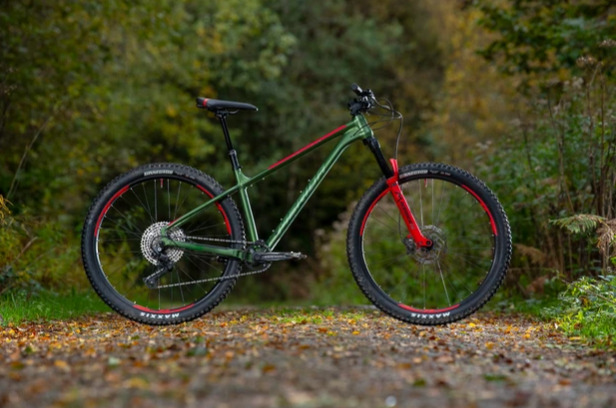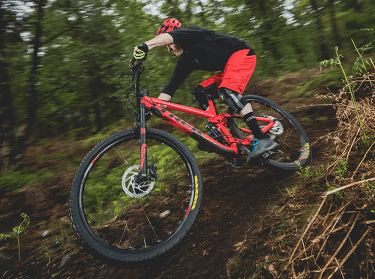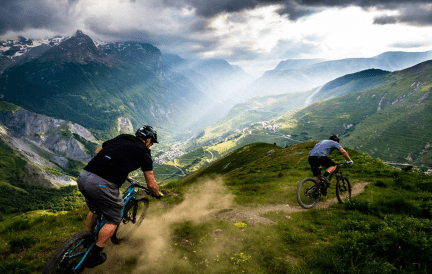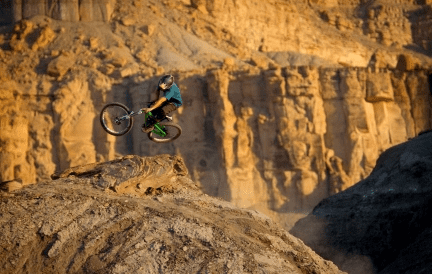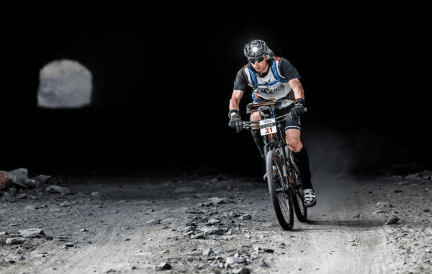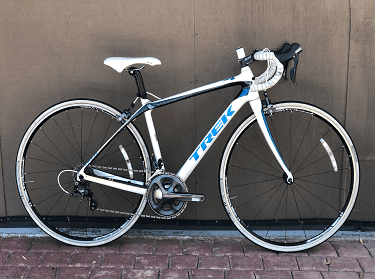The full suspension mountain bike is the dream of every thrill seeker. Extreme MTB enthusiasts used this type and it is perfect for downhill, enduro, and trail riding.
- Part 1: Product Overview
- Part 2: Product Advantages
- Part 3: Product Classification and Introduction
- Part 4: Buying Guide
Part 1: Product Overview
We need to be clear about one thing. A full suspension mountain bike would be challenging to convince someone who has tried riding a full suspension bike once that hardtails are better.

Possibilities
Riding a hardtail is just different. I’m not going to try one either – that’s why we need to be clear to start with. It gives different possibilities, but it also comes with some limitations. A full suspension mountain bike, adequately equipped and advanced, is currently the highest link in the development of two-wheelers.
This is an indisputable fact. However, if only a few years ago the situation was apparent, the last few seasons and rapid development of technology has caused the stiff bikes to…accelerate. This group of bikes are the great beneficiaries of the changes happening before our eyes, changes that make this text really make sense.
A full suspension mountain bike is based on full suspension. It has a shock absorber in the front and a damper in the rear, which greatly reduces all the shocks and bumps. It handles the difficulty of waiting on mountain roads well. It is ideal for both backcountry and specially prepared trails at bike parks. Suppose you are passionate about downhill or enduro and have been riding a hardtail so far. In that case, full suspension mtb will let you rediscover your passion and enjoy even more dynamic descents.
Part 2: Product Advantages
The first thing you think of is comfort. Indeed, comfort is much higher than on a hardtail bike, which is a bike with incomplete suspension. In my opinion, the most important thing is much better bike traction, grip, and handling.
Full Suspension – What do You need it for
Mountain bicycle full suspension works under the user, so the wheel is practically constantly in contact with the ground. When riding over roots on a bike with a rigid frame, the rear wheel jumps, making braking impossible.
Full suspension mountain bicycles have a damper that compensates for uneven terrain so that the wheel has a constant grip. Many hardtail users claim that our muscles’ energy that should hit the pedals is wasted on “pumping” the damper. Thanks to the work of engineers, this effect has been minimized by changing the frame construction, several rotation axes, or even damper design (pro pedal system).
Most Giant full-suspension bikes feature our patented Maestro technology, an unmatched benchmark in performance full-suspension bicycles.
Part 3: Product Classification and Introduction
When preparing a full suspension mountain bike for riding, it is essential to set the correct shock pressure and, depending on where and how you ride, the maximum shock absorption (SAG).
Today’s full suspension mtb bikes can fully lock out the suspension by using a handle on the shock absorber or a specially placed lever on the handlebars. This is essential when riding uphill when we often stand on the pedals.
Full – Bikes for Special Tasks
What exactly is a full bike? This bike equips two shock absorbers – front and rear (the so-called damper). They are responsible for damping shocks and reducing the force of impact of the wheels on obstacles. This improves the comfort of the ride and increases the safety of the cyclist. Full sus mtbshoes are perfect for mountain trails. High hills and drops are not a problem for them. Thanks to full suspension, the landings will be smooth, which will relieve the joints and make it easier to control the bike.
Full Suspension – for Whom
Full suspension mountain bikes are an excellent solution for riders looking for thrills who do not shy away from high speeds and considerable altitude. However, they also work well for people who suffer from joint or spine problems. Full cushioning better absorbs shocks caused by riding over bumps, which allows us to reduce the load acting on our bodies.
How Much Suspension Travel to Choose
While suspension travel doesn’t determine how a bike rides and what type of riding it’s suitable for—frame geometry is just as important, if not more important—it provides valuable Suspension bikes. Here are some of the most commonly used:
80-100mm Travel
Bikes with 100mm or less of rear travel are typically fast, lightweight mileage runners, designed for long-distance climbs and performance rather than tackling challenging technical terrain. They are designed for cross-county and marathon riders for whom speed is a priority. These bikes have more aggressive geometry for optimal pedalling efficiency. 27.5″ or 29″ wheels with narrow, fast-rolling tires and solid but lightweight components. Frame materials are typically lightweight aluminium or carbon fibre for high-end models. Race and marathon bikes usually have a lightweight air shock and weigh between 9 and 12 pounds.
120-140mm Stroke
Many cyclists have found 120-140mm of travel to be the ideal point for tackling a wide range of terrain while still pedalling ergonomically uphill. These trail bikes are for casual, fun riding, not racing. They typically feature a slightly smaller frame angle for confidence downhill, wider wheels and tires for extra strength and grip, and features like a thru-axle fork and larger brake rotors for Precise bike handling and great braking. They will also feature a stiff and lightweight aluminium or carbon frame and weigh between 11 and 13kg.
140-160mm Travel
Bikes with more than 140mm of suspension travel are explicitly geared for downhill cycling or downhill riding (DH). They have loose frame angles and vital components that can take big hits. They feature 26″ or 27.5″ wheels with solid and wide rims and tires, front forks with thru-axle, powerful disc brakes with enlarged rotors front and rear, a short sternum, and wide handlebars, and a chain guide to keep the chain from falling off on rough terrain. Such bikes typically weigh more than 13.5kg.
160mm and Up
Full suspension bikes with more than 160mm of travel were built with a downhill (DH) and freeride (FR) racing in mind.
Downhill bikes have one goal, get you from top to bottom as fast as possible. Armed with highly durable components, including 26″ wheels, long travel triple clamp fork, spring shocks, and powerful enlarged disc brakes. Bikes of this type are not suitable for going uphill, but their horsepower roots and rock gardens make for a typical downhill course. Back up the mountain, they are usually ridden on a train. They can generally weigh more than 18 kg.
Part 4: Buying Guide
It is dedicated to every age group. You can choose mountain bikes of the following types: – hardtail – designed for lighter mountain riding, full sus Mtb can be ridden by the most demanding lovers of mountain riding, as it has great suspension.
Riding Comfort
For women, we recommend a specially selected category of women’s bikes. Mountain biking on such a bike with an adequately specified frame will be a pleasure. They equip lighting and reflectors, which are essential to remember to ride as safely as possible.
Mountain bike equipment also includes bike lights and reflectors, which are essential to remember to ride as safely as possible. Even if it is a measly 100 mm of travel in a strict marathon design, a bike with full suspension is a more comfortable bike. Even that 10 cm of deflection is plenty, especially since it’s a smooth deflection that also takes advantage of the undeniable advantage of natural shock absorbers over “cushioning” by tires, namely damping.
If fast trails in bike parks and winding singles are the equivalent of urban jungles and tall curbs, trail hardtails are stylish urban pseudo-terrain vehicles. The full sus mtb rides over obstacles velvety, nerveless. However, the massive use of carbon in frame manufacturing, clever carbon seatposts, and PLUS low-pressure tires have made today’s stiffs SO MUCH more comfortable than they were just a few years ago. To use an automotive analogy – you’ll never make a city crossover into a real off-road car. But it’s not a stiff car that will knock your teeth out on potholes, either.
Traction
In principle, we could also make an automotive comparison, although not entirely. It all depends on the situation – on descents, a full suspension bike offers a completely different level of grip than any rigid, and what’s more – this grip is available “naturally” without requiring such a high level of riding technique as in the case of bikes without rear shock. This is why hardtails are great for learning to ride – they are less forgiving and much quicker to learn…from mistakes. A full sus mountain bike makes us lazy – it does a lot of the work for us, which normally needs our own legs and body balance.
The situation is slightly different when it comes to climbs. It may be a radical opinion, but a modern stiff bike on PLUS tires will go up against better than a full sus mtb on standard tires. Thick tires lose a lot of their advantages when it comes to descents (of course, they improve grip, but they also do not offer to damp, so they bounce off the ground like a ball), while on climbs, at low speeds, they absorb obstacles like…a tank. Cobblestones, tree roots – all those elements, on which your wheels used to turn a long time ago, but not anymore.
Safety
In this category, we talk about the mix of speed and control and thus the acceptable margin of error. Full suspension mtb pushes this boundary much further – a bad landing, an unexpected obstacle on the route has a far greater chance of being negated in the case of a bike with rear suspension. Plus, tires improve control, especially on dry trails. But when mud, roots, or rocks appear, the problem becomes their flat surface and relatively low tread. Nothing can replace well-tuned full-suspension and aggressive tires.
Full sus Mtb are bikes for long-distance racing on marathon routes or specially prepared loops, i.e., cross-country bikes (XC for short). There are also machines with more extended suspension travel. They will work well for the singletrack or touring in the mountains – look for such models in the Trail category, i.e., trail bikes. Enduro is the machine for thrill-seeking bikers. Their natural habitat is bike parks with natural or specially prepared obstacles of medium difficulty. Downhill bikes are a large calibre for challenging routes. A very high stroke value predestines them to overcome blood-curdling drops or other problems served on downhill routes.
Price
You’ll still find essential parts on most full suspension metamodels at the low end. We recommend spending a minimum of $1500 on full suspension bikes – up to $3000, you can find one for less. But it’s likely to be heavy and have a noticeable loss in quality and performance.
Frame Material
Full suspension Mtb, all metals used in bikes are alloys. We do not use pure iron (steel is a mixture of iron and carbon), pure aluminium, or pure titanium. Instead, additional elements are added to improve the basic properties of the metal. Carbon fibre is slightly different, but we’ll discuss that later. Bicycle companies often talk about using aerospace-grade metals. But the reality is that the designated alloys must meet specific quality requirements. There may be no difference between a bike made of “military-grade” materials and a bike made of non-military-grade materials.
Wheel Size
Full suspension mountain bikes are perfect for riding on rocky trails and steep hills. Mtb full suspension bike, also known as a mountain bike, is ideal for the mountainous wilderness. Thanks to their technologically advanced solutions, a full suspension mountain bike can conquer even the most difficult paths.
the full suspension mountain bike is a comfortable bike on 26, 27.5 (650b), or 29-inch wheels. This professional MTB bike is distinguished by a specially reinforced frame and wheels with wide tires. It provides a better grip when riding over rough terrain.


